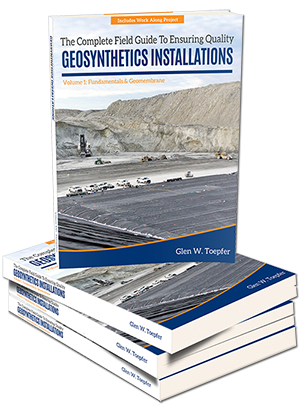The popularity of data recording continues to grow here in the United States and worldwide. The three parameters required to obtain a sound thermal weld are: proper welding temperature, speed, and pressure. Data acquisition devices allow us to individually look at each of these parameters throughout the seaming process thus affording us the opportunity to catch something that may otherwise go unnoticed.
Of course, in making any decisions based on this technology, it is important to fully understand how to properly apply the technology as well as the limitations of the technology – things that may not be contained within the instruction manual! Unfortunately, at the time of this writing, there is little such guidance, at least here in the United States.
My fear is that there will be knee-jerk reactions with this technology which are harmful first and foremost to our industry, but ultimately to the environment and people the geosynthetic liners are meant to protect. I tried to address some of these concerns in a series of blogs back when GRI-GM32 came out, which although GM32 created more questions than answers at least was an attempt to provide some guidance on the technology.
My fear of knee-jerk reactions seems to be turning into reality. In the last year alone, I’ve observed numerous conclusions being drawn and recommendations being made to our industry through conference presentations and industry magazines that simply don’t align with the use of this technology on thermal fusion welds.
Unfortunately, I don’t have time for a lengthy post on the subject at this time, so I am going to test your knowledge in the meantime and get back with a more detailed blog(s) soon.
Here is your quiz – good luck!



